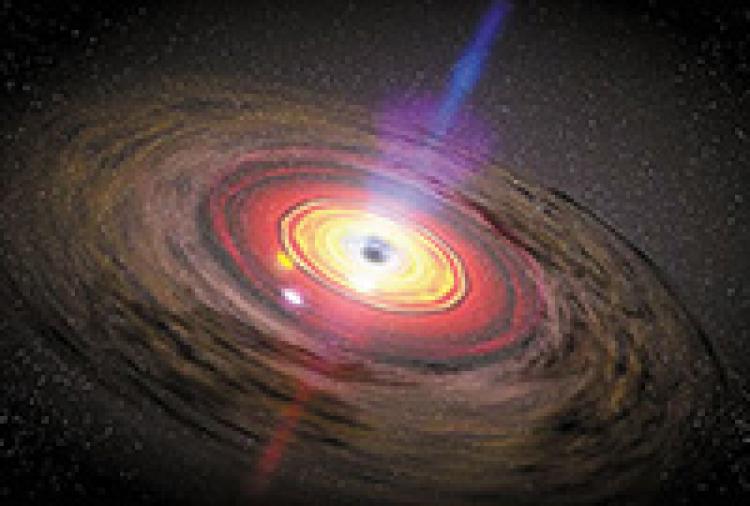Theoretical Plasma Astrophysics
Overview
Plasma Astrophysics is the cross-disciplinary field that aims at understanding various astrophysical phenomena by applying the knowledge obtained in Plasma Physics. Since most of the visible matter in the universe --- stars, hot gas in clusters of galaxies, and various phases of the interstellar medium inside galaxies --- exists in the plasma form, the field of Plasma Astrophysics is very broad and diverse, both in its methods and in the areas of application. Although Plasma Astrophysics in its traditional definition focusses on studying plasma processes and phenomena that take place outside of the Solar System, it has strong ties with allied disciplines of Solar Physics, Space Physics, and Laboratory Plasma Physics, all of which have a strong presence in Boulder.

- Fundamental physics of magnetic reconnection
- Radiative relativistic magnetic reconnection and associated nonthermal particle acceleration and radiation emission, and astrophysical applications such as:
- pulsar magnetospheres and pulsar wind nebulae (PWN)
- blazar/AGN jets
- gamma-ray bursts (GRBs)
- coronae of accreting black holes in AGN and XRBs
- Turbulent accretion disks around black holes and their magnetically-active coronae.
- Magnetic reconnection in high-energy-density astrophysical plasmas with applications to magnetar flares and gamma-ray bursts.
- Quantum plasma physics

